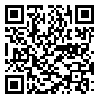

Volume 29, Issue 3 (Summer 2023)
Intern Med Today 2023, 29(3): 163-167 |
Back to browse issues page
Download citation:
BibTeX | RIS | EndNote | Medlars | ProCite | Reference Manager | RefWorks
Send citation to:



BibTeX | RIS | EndNote | Medlars | ProCite | Reference Manager | RefWorks
Send citation to:
Zamani H, Ghorbani M, Taghdiri A, Moshari J. Platelet Satellitism around Neutrophils in a Four-Year-Old Girl with Urinary Tract Infection: A Case Report. Intern Med Today 2023; 29 (3) :163-167
URL: http://imtj.gmu.ac.ir/article-1-4079-en.html
URL: http://imtj.gmu.ac.ir/article-1-4079-en.html
1- BSc in Laboratory sciences, Gonabad University of Medical Sciences, Gonabad, Iran
2- PhD in Laboratory Hematology and Blood Bank, School of Medicine, Social Development and Health Promotion Research Center, Gonabad University of Medical Sciences, Gonabad, Iran
3- Asissistant professor of Pediatric Nephrology, Pediatric Department, School of Medicine, Gonabad University of Medical Sciences, Gonabad, Iran ,_
2- PhD in Laboratory Hematology and Blood Bank, School of Medicine, Social Development and Health Promotion Research Center, Gonabad University of Medical Sciences, Gonabad, Iran
3- Asissistant professor of Pediatric Nephrology, Pediatric Department, School of Medicine, Gonabad University of Medical Sciences, Gonabad, Iran ,
Abstract: (2183 Views)
Introduction: Platelet satellitism is a rare in vitro phenomenon , which is considered as one of the causes of pseudo thrombocytopenia. This phenomenon is almost always observed in peripheral blood smears prepared from blood samples containing EDTA anticoagulant and at ambient temperature although it is not visible at lower temperatures and in blood samples treated with other anticoagulants. If the peripheral blood smear is not performed, this can cause misdiagnosis of thrombocytopenia. In this case, the platelet count of a 4-year-old child was checked in the laboratory for platelet satellitism.
Methods: The patient's blood samples were collected with both EDTA and sodium citrate anticoagulants separately , and the platelet was counted with cell counter. At the same time as the platelet count was done by the device, the peripheral blood smears were also analyzed. No bleeding symptoms were observed in the patient.
Findings: Platelet count in the sample with EDTA anticoagulant was 85×109/L, and in the peripheral blood smear prepared from this sample, the platelet satellitism was observed only around neutrophils. However, there was no platelet satellitism in the sample prepared with sodium citrate anticoagulant and the patient's platelet count increased to 242×109/L.
Conclusion: Platelet satellitism is a rare phenomenon that can lead to laboratory error by inducing pseudo thrombocytopenia. This condition should be considered in thrombocytopenia cases without clinical symptoms because it may have negative effects on the patient's care process by performing inappropriate therapeutic interventions.
Methods: The patient's blood samples were collected with both EDTA and sodium citrate anticoagulants separately , and the platelet was counted with cell counter. At the same time as the platelet count was done by the device, the peripheral blood smears were also analyzed. No bleeding symptoms were observed in the patient.
Findings: Platelet count in the sample with EDTA anticoagulant was 85×109/L, and in the peripheral blood smear prepared from this sample, the platelet satellitism was observed only around neutrophils. However, there was no platelet satellitism in the sample prepared with sodium citrate anticoagulant and the patient's platelet count increased to 242×109/L.
Conclusion: Platelet satellitism is a rare phenomenon that can lead to laboratory error by inducing pseudo thrombocytopenia. This condition should be considered in thrombocytopenia cases without clinical symptoms because it may have negative effects on the patient's care process by performing inappropriate therapeutic interventions.
Type of Study: Case report |
Subject:
Basic Medical Science
Received: 2025/03/16 | Accepted: 2025/05/20 | Published: 2023/01/1
Received: 2025/03/16 | Accepted: 2025/05/20 | Published: 2023/01/1
| Rights and permissions | |
 |
This work is licensed under a Creative Commons Attribution-NonCommercial 4.0 International License. |


